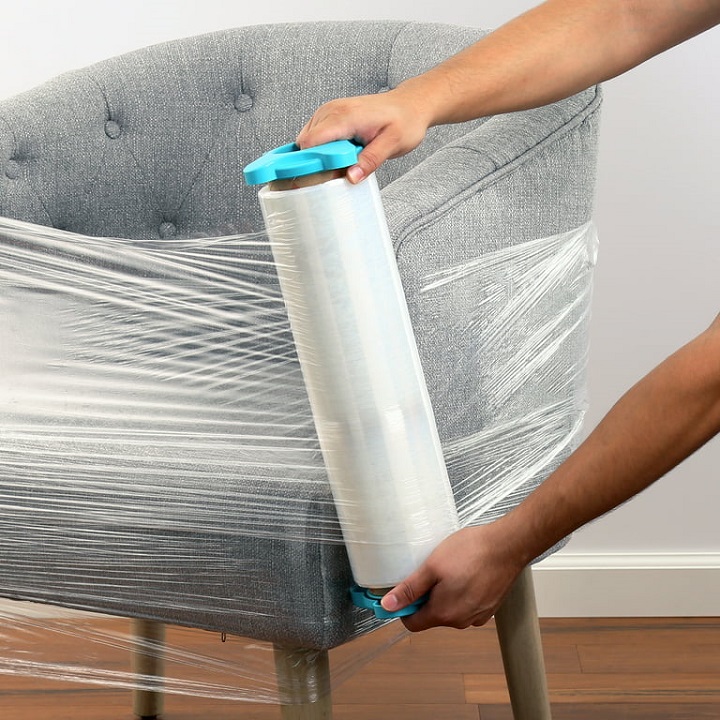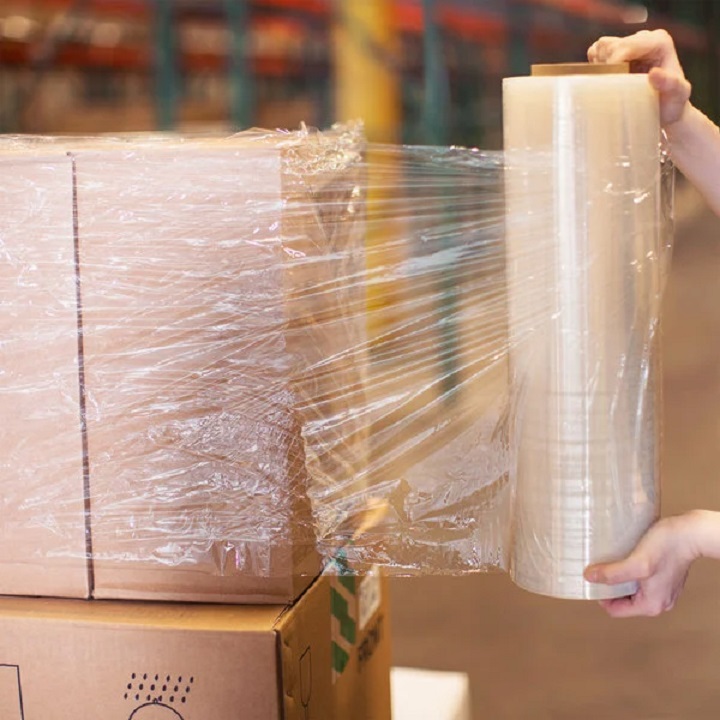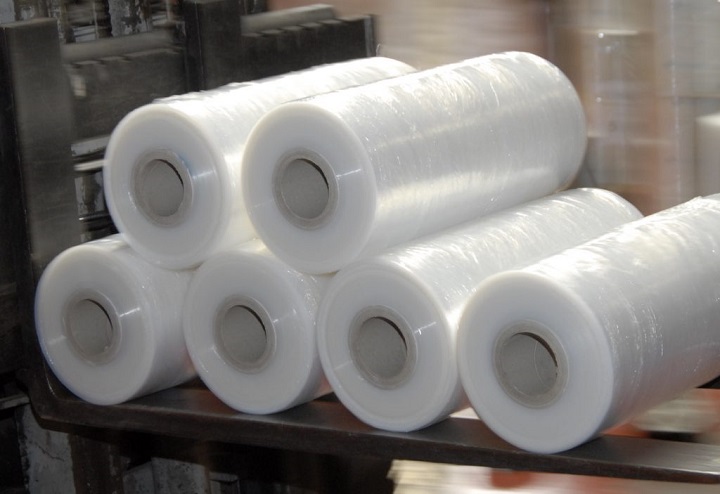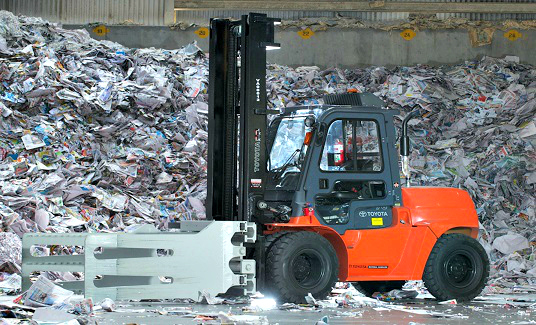Stretch Wrap: A Versatile Packaging Solution for Protecting Your Goods
Packaging is ubiquitous in our modern world, serving a multitude of purposes ranging from preserving food freshness to protecting goods during transportation. Among the numerous types of packaging solutions is the plastic wrap, also known as plastic film. This highly versatile packaging material is commonly used across industries for bundling, stabilising, and securing loads for transportation or storage.
How Stretch Wrap Works?

This thin, elastic, stretch film is manufactured from linear low-density polyethylene (LLDPE) or other similar materials, which possess exceptional stretch and recovery properties. It functions through the application of tension, which causes the film to stretch and conform tightly around an object or a pallet load.
This tension is typically applied using manual or automated equipment, such as handheld dispensers or machine wrappers. As the film is stretched, it creates a resilient, elastic band around the load, effectively holding it together and preventing shifting or movement during transit.
One of the key properties of stretch wrap is its ability to elongate significantly without losing its integrity. This stretchability allows the film to adapt to the shape and contours of irregularly shaped items, ensuring a snug fit and optimal load stability.
Eco Stretch Wrap
Eco wrap, or sustainable film, is a type of plastic packaging material designed to reduce environmental impact compared to traditional plastic wraps. It is typically made from recycled materials or biodegradable polymers, offering a more eco-friendly alternative for wrapping pallets, boxes, or other items.
This environmentally friendly wrap often contains post-consumer recycled materials, reducing the demand for virgin plastic resin and diverting waste from landfills. Some eco wraps are formulated to biodegrade under certain conditions, minimising environmental harm if they end up in the environment.
Strength Characteristics

The strength of the wrap film is determined by various factors, including its thickness, composition, and the degree of stretch applied during wrapping. Standard film is available in various thicknesses, typically ranging from 40 to 120 gauge (0.4 to 1.2 mil), with heavier gauge films offering greater puncture resistance and load-holding strength.
The stretchability of the film plays a crucial role in its strength characteristics. Most films can be stretched to approximately 100-300% of their original length before reaching their breaking point. This high elongation capacity allows the film to withstand the stresses and forces encountered during transit or storage, such as vibration, compression, and impact.
Some plastic packaging films are engineered with special additives or reinforcements to enhance specific performance attributes, such as tear resistance, cling properties, or UV protection. These tailored formulations cater to the diverse requirements of different industries and applications, ensuring optimal performance under various conditions.
Applications Across Industries
Wrap film finds widespread use across numerous industries due to its versatility, cost-effectiveness, and performance benefits. Some common applications include:
Pallet Wrapping: The wrap is extensively used to secure and stabilise palletised loads for shipment or storage. By tightly wrapping the load, the film prevents shifting, toppling, and damage during handling and transportation.
Product Bundling: This packaging solution is employed to bundle together individual items or products, such as lumber, pipes, or furniture components. This bundling ensures compactness and facilitates handling, storage, and display.
Protective Covering: This film can be used as a protective covering for goods susceptible to dust, moisture, or tampering. By enveloping the items in a protective layer, it helps maintain product integrity and cleanliness.
Unitising: In manufacturing and distribution facilities, the wrap is utilised to unitise multiple products or components into cohesive units for efficient handling and storage.
Food Packaging: This packaging option is also employed in the food industry for wrapping perishable goods, such as meat, produce, and dairy products. Food-grade films comply with stringent safety and hygiene standards to ensure product freshness and integrity.
Spiral Machine Wrapping Film

Spiral machine wrapping film, also known as spiral stretch wrap, is a specialised type of packaging designed for use with spiral wrapping machines. These machines automate the process of applying wrap to cylindrical or elongated objects, such as pipes, tubes, or coils. Spiral wrapping involves the continuous application of machine wrap film in a spiral pattern around the length of the object, creating a tight, uniform covering. This method offers several advantages, including:
Efficiency: Spiral wrapping machines can wrap objects rapidly and consistently, reducing labor costs and increasing throughput.
Protection: By enveloping the object in multiple layers of stretch film, spiral wrapping provides enhanced protection against scratches, abrasion, and moisture.
Versatility: Spiral wrapping machines can accommodate a wide range of object sizes and shapes, making them suitable for diverse applications across industries such as construction, manufacturing, and logistics.
Space Optimisation: Spiral-wrapped objects can be stacked or stored more efficiently, maximising storage space and minimising warehouse footprint.
To Wrap Up
This is a fundamental packaging material renowned for its strength, versatility, and wide-ranging applications. Whether used for pallet wrapping, product bundling, or spiral machine wrapping, the wrap film plays a crucial role in safeguarding goods and optimising supply chain efficiency. With ongoing advancements in material science and manufacturing technology, it continues to evolve in design, offering enhanced performance and sustainability benefits for the packaging industry.






